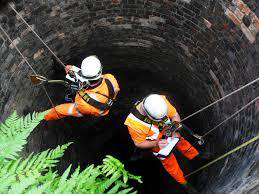COURSE OVERVIEW
HE0110 : Certified HAZOP Member

OVERVIEW
| COURSE TITLE | : | HE0110 : Certified HAZOP Member |
| COURSE DATE | : | Mar 03 - Mar 07 2024 |
| DURATION | : | 5 Days |
| INSTRUCTOR | : | Mr. Andrew Ladwig |
| VENUE | : | Dubai, UAE |
| COURSE FEE | : | $ 5500 |
| Request For Course Outline | ||
OTHER SCHEDULED DATES
| Date | : | Mar 03 - Mar 07 (5 Days) | Location | : | Al Khobar, KSA | Classroom Fee (US$) | : | $ 5500 | Course Info |
| Date | : | Apr 28 - May 02 (5 Days) | Location | : | Dubai, UAE | Classroom Fee (US$) | : | $ 5500 | Course Info |
| Date | : | Jun 02 - Jun 06 (5 Days) | Location | : | Istanbul, Turkey | Classroom Fee (US$) | : | $ 6000 | Course Info |
| Date | : | Aug 04 - Aug 08 (5 Days) | Location | : | Dubai, UAE | Classroom Fee (US$) | : | $ 5500 | Course Info |
| Date | : | Sep 01 - Sep 05 (5 Days) | Location | : | Dubai, UAE | Classroom Fee (US$) | : | $ 5500 | Course Info |
| Date | : | Sep 01 - Sep 05 (5 Days) | Location | : | Doha, Qatar | Classroom Fee (US$) | : | $ 6000 | Course Info |
| Date | : | Dec 08 - Dec 12 (5 Days) | Location | : | Istanbul, Turkey | Classroom Fee (US$) | : | $ 6000 | Course Info |
Course Description
This practical and highly-interactive course includes various practical sessions and exercises. Theory learnt will be applied using one of our state-of-the-art simulators. Hazardous chemicals are ubiquitous as air, carbohydrates, enzymes, lipids, minerals, proteins, vitamins, water and wood. Naturally occurring hazardous chemicals are supplemented by manmade substances. There are about 70,000 chemicals in use with another 500-1000 added each year. Their properties have been harnessed to enhance the quality of life, thus chemicals are found in virtually all workplaces. Besides the benefits, chemicals also pose dangers to man and the environment. Society must strike a balance between the benefits and risks of hazardous chemicals. In the workplace it is a management responsibility to ensure practices control the dangers, and it is for employees to collaborate in implementing the agreed procedures. Management must also prevent uncontrolled environmental releases and ensure all wastes are disposed of safely and with proper regard for their environmental impact. The aims of this course are to raise awareness and to help participants identify, assess and control the hazards of chemicals to permit optimum exploitation whilst minimizing the dangers. The hazards of chemicals stem from their inherent flammable, explosive, toxic, carcinogenic, corrosive, radioactive or chemical-reactive properties. The effect of exposure on personnel may be acute (fatal) or prolonged that result in an occupational disease or systemic poisoning. However, whether a hazardous condition develops in any particular situation also depends upon the physical properties of the chemical (or mixture of chemicals), the scale involved, the circumstances of handling or use, e.g. provision of control and safety devices, local exhaust ventilation, general ventilation, personal protection, atmospheric monitoring and systems of work generally. This course is designed to cover occupational, industrial and environmental hazards associated with hazardous materials and chemicals. It includes chemical spills, fires and explosions since they inevitably involve chemical compounds. Further, the course will present information on the nature of hazardous materials and chemicals and help participants reduce or eliminate potential exposure to hazardous materials and chemicals in their work environment. link to course overview PDF
TRAINING METHODOLOGY
This interactive training course includes the following training methodologies as a percentage of the total tuition hours
LecturesWorkshops & Work Presentations
Case Studies & Practical Exercises
Videos, Software & Simulators
In an unlikely event, the course instructor may modify the above training methodology before or during the course for technical reasons.
VIRTUAL TRAINING (IF APPLICABLE)
If this course is delivered online as a Virtual Training, the following limitations will be applicable
| Certificates | : | Only soft copy certificates will be issued to participants through Haward’s Portal. This includes Wallet Card Certificates if applicable |
| Training Materials | : | Only soft copy Training Materials (PDF format) will be issued to participant through the Virtual Training Platform |
| Training Methodology | : | 80% of the program will be theory and 20% will be practical sessions, exercises, case studies, simulators or videos |
| Training Program | : | The training will be for 4 hours per day starting at 09:30 and ending at 13:30 |
| H-STK Smart Training Kit | : | Not Applicable |
| Hands-on Practical Workshops | : | Not Applicable |
| Site Visit | : | Not Applicable |
| Simulators | : | Only software simulators will be used in the virtual courses. Hardware simulators are not applicable and will not be used in Virtual Training |
RELATED COURSES

HE1845 : Design of Protection System
- Date : Dec 23 -Dec 26 / 3 Days
- Location : Abu Dhabi, UAE
- Course Details Register

HE0718 : Root Cause Analysis & Incident/Accident Investigation
- Date : Dec 09 -Dec 12 / 3 Days
- Location : Dubai, UAE
- Course Details Register

HE0756 : Rescue Operations in Hazardous Locations
- Date : Nov 25 -Nov 29 / 3 Days
- Location : Abu Dhabi, UAE
- Course Details Register

HE1704 : NFPA 1001: Fire Fighting Level 1 and 2
- Date : Nov 25 -Nov 29 / 3 Days
- Location : Abu Dhabi, UAE
- Course Details Register
